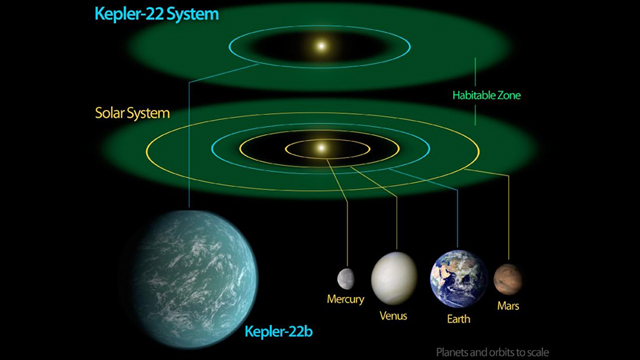
It's 600 light years from Earth, orbits a star very similar to our Sun in a period of about 290 days, and has a diameter about two and a half times that of Earth. What is it? It's the NASA Kepler mission's most recent exciting confirmed discovery, the extrasolar-planet (exoplanet) Kepler 22B.
Another real, Earth-sized planet to imagine? Cool! I'm on it….
It's fun to play around with the planetary possibilities, as science fiction writers have done for decades, but having a real find out there to pin our thoughts on is something more. On that blank ball-shaped canvass we can paint whatever atmosphere, hydrosphere, lithosphere--and who knows, biosphere?--we care to imagine, at least until scientific observation starts to fill in those details.
But, Kepler 22B offers something more to our fancy than a mere Earthoid dress-up doll. Being somewhat larger than our world, though still smaller than a Neptune or a Uranus, places it in the category of "super-Earth," a type of planet that we have very little experience with.
What do we know of Kepler 22B beyond the barebone figures revealed by the Kepler spacecraft? In a word, not much. Kepler—a really big camera orbiting the Sun and staring at a patch of 150,000 or so stars in the constellation Cygnus—was designed to detect the presence of Earth-like exoplanets. Using the "transit" method of exoplanet detection, Kepler watches unblinkingly for the slight dimming of a star's light as one of its planets "transits," or moves across, its face.
